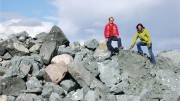As the human toll of Japan’s devastating triple disaster becomes clearer, the world is beginning to take stock of the potential economic impacts of the March earthquake, tsunami and nuclear incident. The global ripples from the disasters in Japan are substantial, and they include the diamond sector.
Japan has been an important consumer of polished diamonds since the 1980s. While its relative importance globally declined during the 1990s and into the 21st century, Japan remains an important consumer of quality diamonds of all sizes. According to De Beers, in 2010, Japan’s market share was 11% of the world’s polished. After a number of years of stagnant growth, in 2010, Japanese polished diamonds imports registered their first annual increase in six years. Almost 66% of the polished diamonds imports into Japan come from India, with the remainder from Belgium (22%) and Israel (12%). In the short and medium term, Japanese polished imports will no doubt decrease, and some Indian exporters may be searching for new destinations for their polished diamonds.
Diamond jewelry retailers in Japan will certainly face some difficult times. With the significant rebuilding that individuals, families and communities will need to do over the next few years, the purchase of luxury products will take a back seat to questions of housing and food. Tiffany & Co. (TIF-N) forecasts a 15% decrease in sales in the first quarter of 2011, due to the Japanese crisis. Tiffany has 55 stores in Japan (out of more than 200 worldwide), representing about 18% of total sales and 25% of its profits. A few of its locations were damaged in the earthquake.
Japan also represents 18% of Harry Winston Diamond’s (HW-T, HWD-N) sales. In a presentation to investors made in December 2010, Harry Winston forecast that the growth in the global luxury market over the next few years will be in Asia outside of Japan and that while the Japanese market is still profitable, it is saturated. So while retail diamond sales will no doubt decrease, Japan was not considered as a source of substantial growth in the luxury sector in the future.
For decades the United States has been the dominant consumer of diamond jewelry, with at times close to 50% of the market. However, over the past five 5 to 10 years, consumer demand in the Far East has grown substantially. Demand for diamonds in the Far East (China, India, Taiwan, Hong Kong and Japan) in 2010 is estimated at 34% of global demand based on the polished wholesale prices of diamonds in diamond jewelry, or about US$5.8 billion. The U.S. market, by comparison, is estimated at 38% or US$6.5 billion.
Most of the growth in the Far East region is anticipated to be from China and India, where demand for diamond jewelry rose by 25% and 31%, respectively, in 2010. While a small recovery had begun in the Japanese market in 2010, the growth potential in the relatively mature market pales in comparison with the up-and-coming Chinese and Indian markets. It is these two countries that are driving the global growth in polished diamonds. An illustration of this shift, Tiffany closed two of its stores in Japan in the fourth quarter of 2010 while opening four in China.
Japan’s global influence and importance as a consumer of diamonds had already been declining prior to these recent crises. The disasters will perhaps accelerate Japan’s decline as a major player in the global polished diamond markets, but are unlikely to have any significant impact on the global diamond industry.
—The author is a diamond consultant based in Saskatoon, Sask., and can be reached at mirving@sasktel.net.


Be the first to comment on "Will Japan’s disasters derail the diamond recovery?"